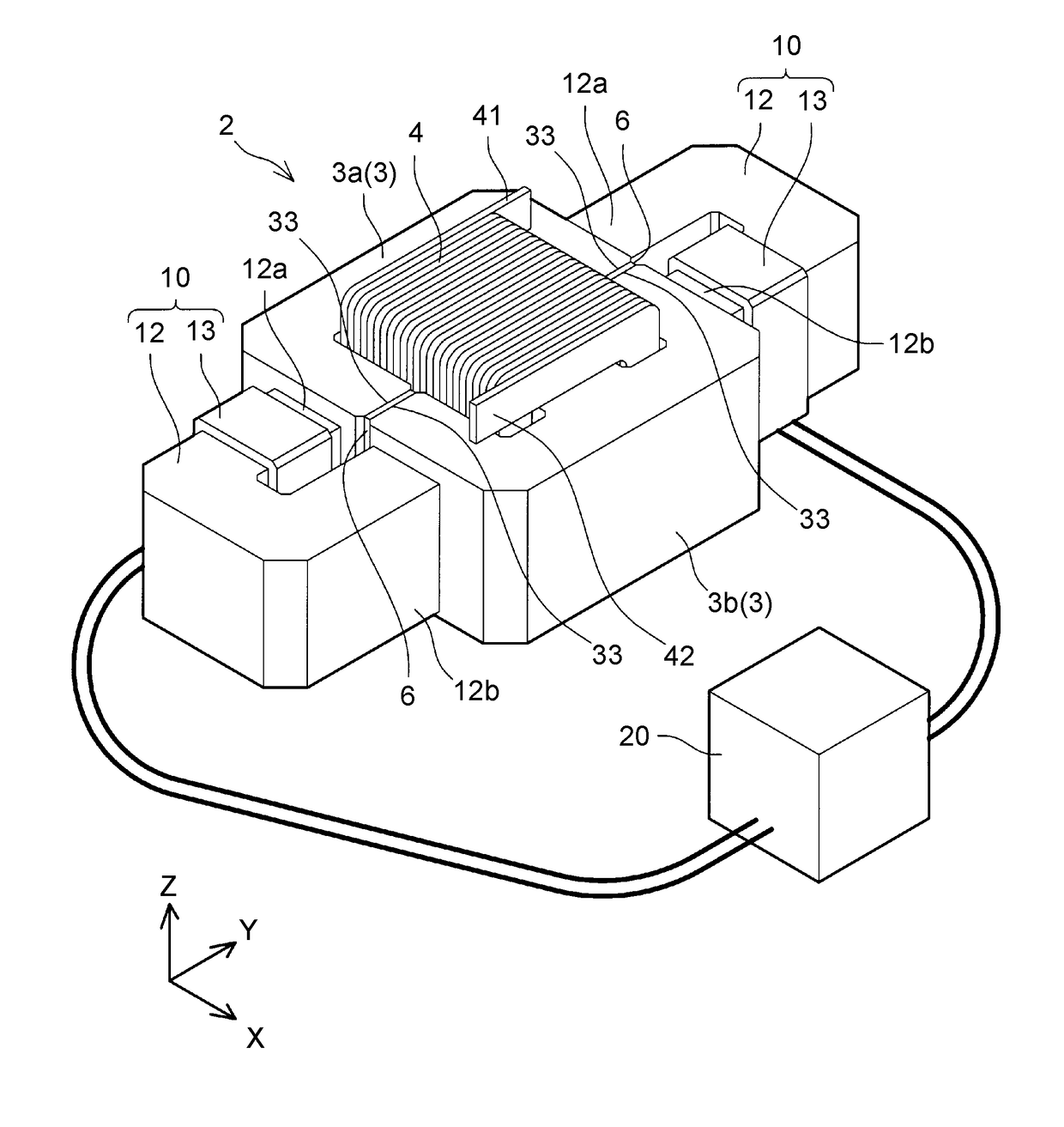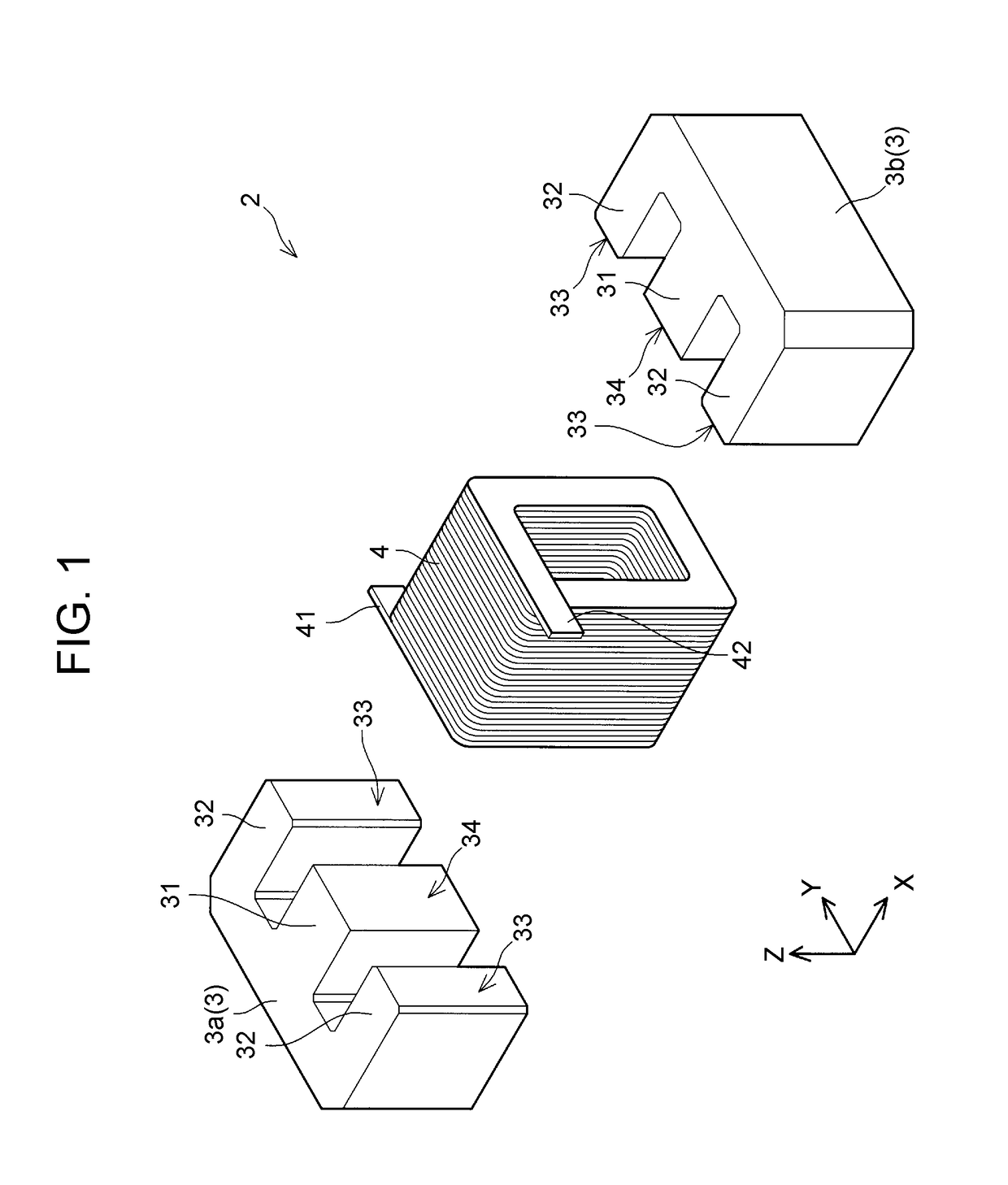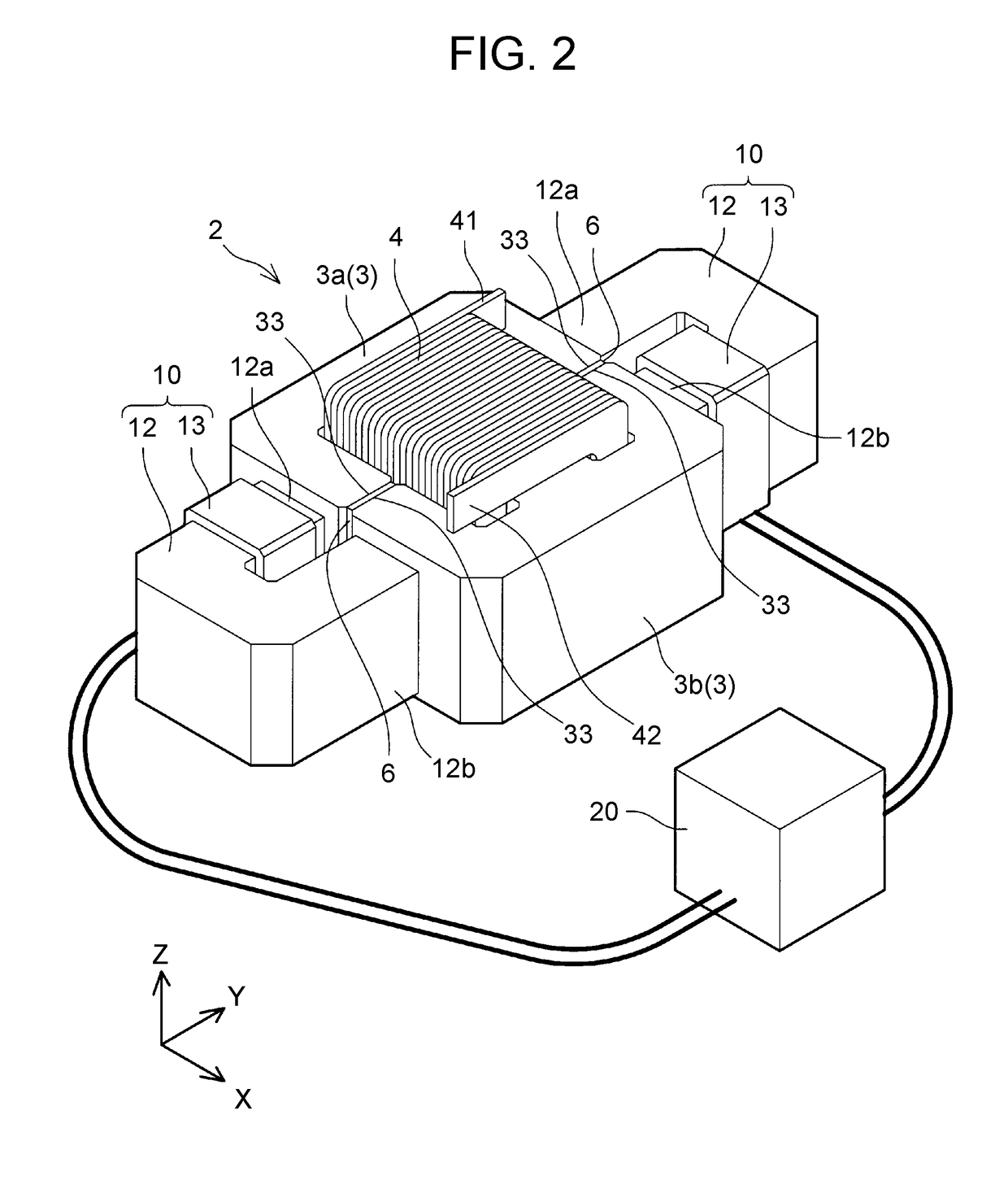Manufacturing method of reactor and heating device
a manufacturing method and heating device technology, applied in the manufacture of magnetic cores, transformers/inductance details, electrical devices, etc., can solve the problems of not being able to avoid heat being produced in the winding of reactor coils, and achieve the effects of increasing the density of magnetic flux, reducing the loss of heating cores, and increasing the heat production
- Summary
- Abstract
- Description
- Claims
- Application Information
AI Technical Summary
Benefits of technology
Problems solved by technology
Method used
Image
Examples
Embodiment Construction
[0023]A reactor manufacturing method of an embodiment will be described with reference to the drawings. First, a reactor 2 that is one example of the reactor manufactured by the manufacturing method of the embodiment will be described. FIG. 1 is an exploded perspective view of the reactor 2. The reactor 2 includes two E-shaped core segments 3a, 3b, and a coil 4. The core segments 3a, 3b will be collectively referred to as a reactor core 3. The two core segments 3a, 3b have the same shape. The core segments 3a, 3b are disposed so that leading end surfaces 33, 34 of three straight parts 32, 31 extending parallel to one another of one core segment face those of the other core segment, with the central straight parts 31 passed through an inside of the coil 4.
[0024]The leading end surfaces 33 of the right and left straight parts 32 of the core segment 3a are bonded with those of the core segment 3b. In other words, the leading end surfaces 33 constitute bonding interfaces between the two...
PUM
| Property | Measurement | Unit |
|---|---|---|
| alternating magnetic flux | aaaaa | aaaaa |
| temperature | aaaaa | aaaaa |
| area | aaaaa | aaaaa |
Abstract
Description
Claims
Application Information
 Login to View More
Login to View More - R&D
- Intellectual Property
- Life Sciences
- Materials
- Tech Scout
- Unparalleled Data Quality
- Higher Quality Content
- 60% Fewer Hallucinations
Browse by: Latest US Patents, China's latest patents, Technical Efficacy Thesaurus, Application Domain, Technology Topic, Popular Technical Reports.
© 2025 PatSnap. All rights reserved.Legal|Privacy policy|Modern Slavery Act Transparency Statement|Sitemap|About US| Contact US: help@patsnap.com



